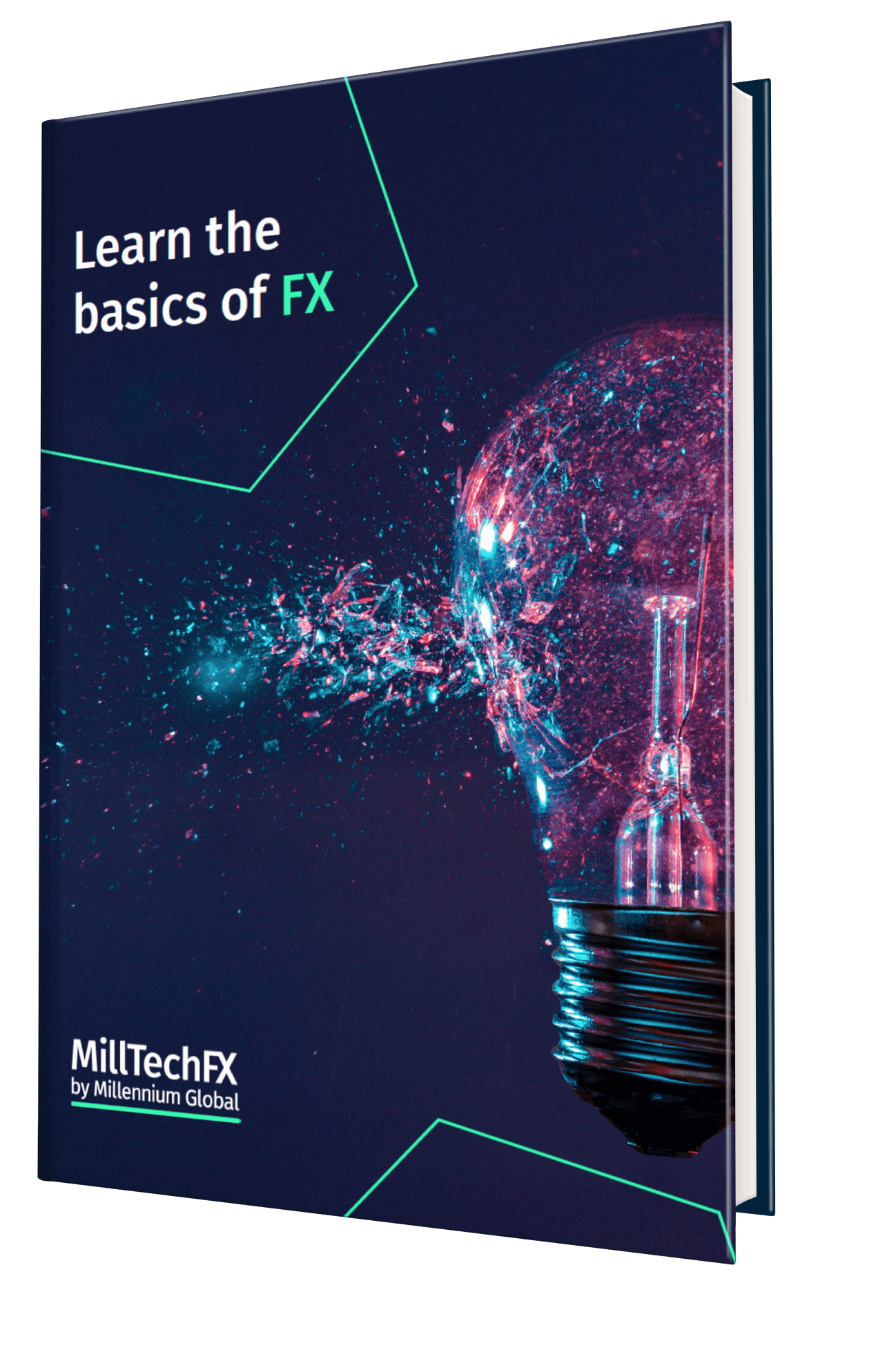FX Options
Forex options explained:
- What are FX options trading?
- How do FX options work?
- Types of FX options
- Forex options call example
- How are currency options different to other FX markets?
- Why do people use FX options?
- Advantages of FX options
- Disadvantages of FX options
What are FX options trading?
A forex option is a financial derivative that grants the holder the right, but not the obligation, to exchange a specified amount of one currency for another at a predetermined exchange rate (strike price) on or before a specified date (expiration date).
How do FX options work?
FX option contracts give the holder the right, but not the obligation, to buy or sell an underlying asset at a set price. This eliminates downside risk, whilst maintaining upside potential, allowing the holder to opt not to execute the option, should the underlying asset value become favourable.
Types of FX options:
Vanilla Forex options:
Call option
The right, but not the obligation, to buy an underlying asset.
Put option
The right, but not the obligation, to sell an underlying asset.
Exotic Forex options:
Barrier options
Settlement is dependant on whether an asset reaches a pre-determined price.
Knock-out: If the asset exceeds a pre-determined price, the option becomes worthless.
Knock-in: Option becomes valuable once achieving a pre-determined price.
Digital options
Traders can set a strike price, with a fixed payout guaranteed whether the asset reaches the strike price or not on the pre-determined date.
Asian options
Payout amount is determined by the average price of the asset over a certain time period.
Forex options call example:
An investor is selling an asset worth $10M and would like to exchange this GBP upon completion.
The investor decides to take out an FX option at a strike of 0.78, with a one year expiry date.
Outcome one:
On the completion date the USD/GBP has an exchange rate of 0.77, making the strike price 0.78 more favourable.
Strike price of option: $10M * 0.78 = £7.8M.
Spot rate: $10M * 0.77 = £7.7M.
The total profit of the forex option is therefore £0.1M.
Outcome two:
On the completion date the USD/GBP has an exchange rate of 0.79, making the strike price of 0.78 less favourable.
Option: $10M * 0.78 = £7.8M.
Spot rate: $10M * 0.79 = £7.9M.
The option is therefore worthless and the investor executes at the current spot rate.
The investor does not profit on the transaction and loses the premium paid to purchase the FX option.
How are currency options different to other FX markets?
Options traded in the FX marketplace differ from those in other markets in that they allow traders to trade without taking actual delivery of the asset.
Why do people use FX options?
- Hedge against currency risk – Secure an FX option to hedge against the negative impact of currency volatility.
- Profit from expected movements – If a currency pair is expected to trend, FX options can be purchased with the aim to make a profit.
Advantages of FX options:
- Minimal risk – The buyer of option is not obliged to buy/sell an asset, therefore the maximum loss is the premium used to secure the option.
- Potential for large profits – If the currency pair the option is secured against favourably moves, there is a large potential for profit.
- Flexibility – Holder has the option to either exercise the option or pull out from the option contract.
Disadvantages of FX options:
- Expensive – Premium required can be high, especially in period of high volatility.
- Loss of premium – If the spot price moves against the strike price , premium will be lost.
- Complex solution – Rules, regulations and pricing can be complicated.
Related terms:
What is MillTechFX?
We provide access to a transparent marketplace for comparative FX execution from up to 15+ counterparty banks, while harnessing a unique and significant pricing efficiency for our clients and reducing their operational burden. In addition, MillTechFX provides clients with full transparency of execution via independent TCA reporting.
